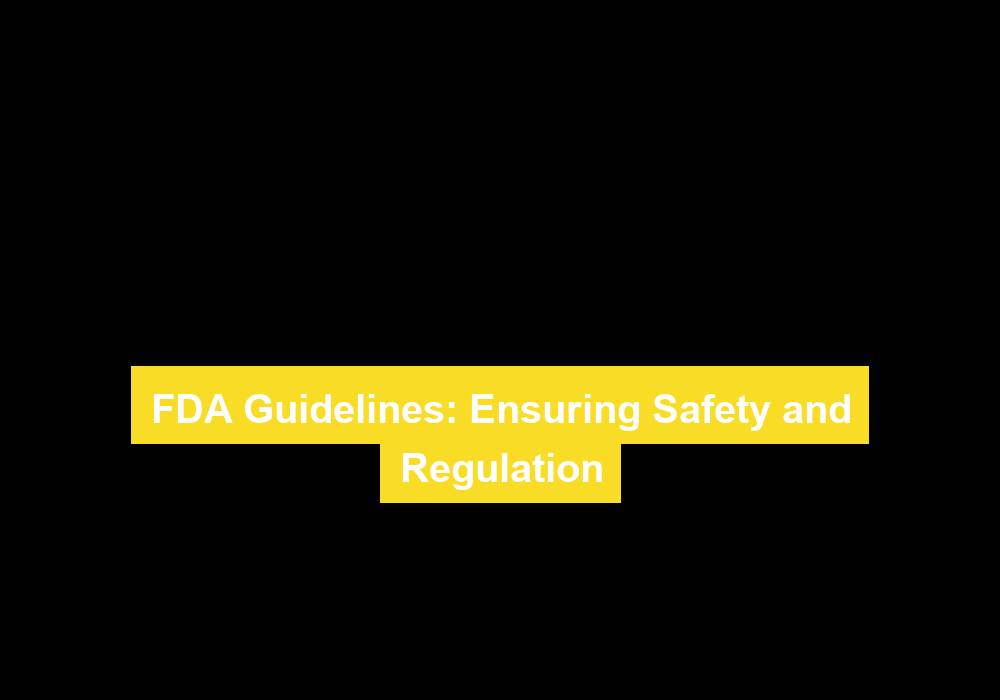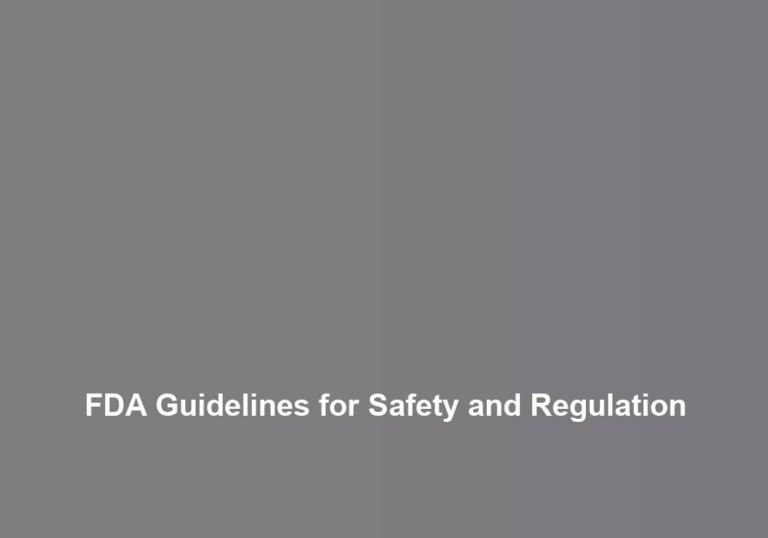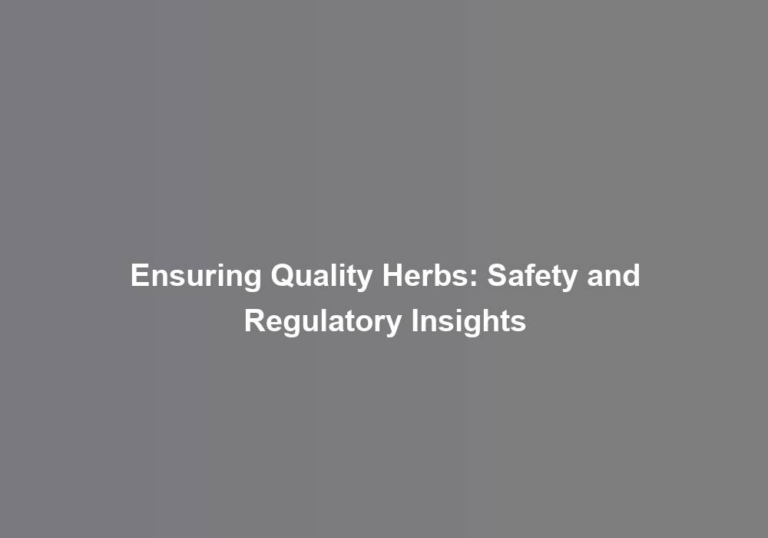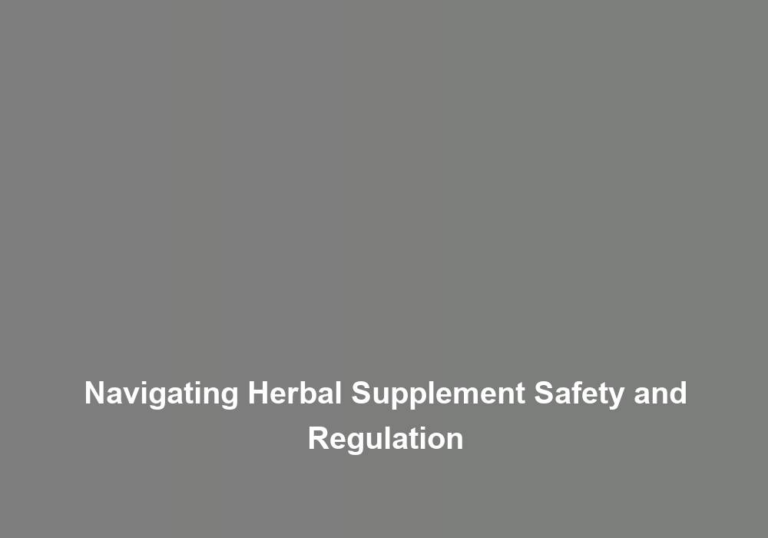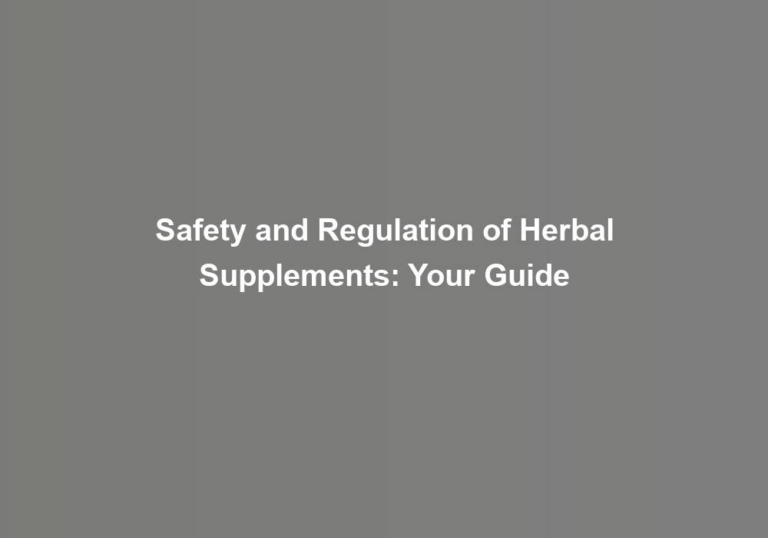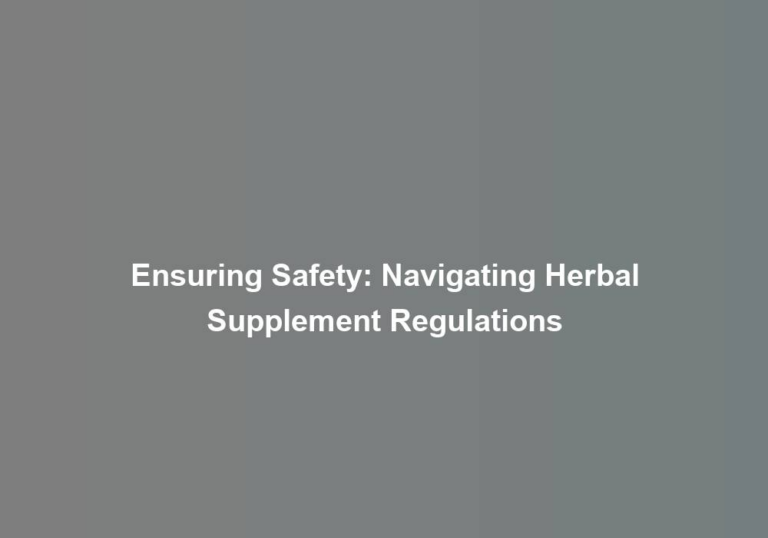FDA Guidelines: Ensuring Safety and Regulation
When you reach for a medication or open a package of food, you likely donG??t think about the intricate web of regulations and safety measures that went into ensuring its quality and efficacy. However, the FDA Guidelines play a crucial role in safeguarding public health by setting standards for the development, manufacturing, and distribution of pharmaceuticals, medical devices, and food products. These guidelines are not just bureaucratic red tape; they are the backbone of a system that protects consumers from harm and ensures that the products they use are safe and effective. But how exactly does the FDA go about ensuring this level of safety and regulation, and what impact do these guidelines have on the products you encounter every day?
Development of FDA Guidelines
When developing FDA guidelines, it is crucial to engage with stakeholders to ensure comprehensive and effective regulation. Regulatory oversight plays a pivotal role in safeguarding the public and industry standards. By involving stakeholders in the development process, the FDA can tap into a wealth of diverse expertise and perspectives, ensuring that the guidelines address the real needs and concerns of all parties involved.
Engaging with stakeholders fosters a sense of collaboration and inclusivity, where everyone feels heard and valued. This collaborative approach not only enhances the quality of the guidelines but also cultivates a sense of belonging and ownership among the stakeholders. When individuals and organizations feel that their input matters, they are more likely to comply with the resulting guidelines, leading to better overall outcomes for public health and industry integrity.
Furthermore, involving stakeholders from various sectors fosters a holistic understanding of the regulatory landscape, taking into account the unique challenges and opportunities within different segments of the industry. This comprehensive approach helps the FDA develop guidelines that are not only robust but also flexible enough to accommodate diverse needs without compromising on safety and efficacy.
In essence, the development of FDA guidelines is a collective effort that thrives on the active participation of stakeholders. This inclusive approach not only strengthens regulatory oversight but also promotes a sense of shared responsibility and commitment to upholding industry standards for the greater good.
Regulatory Impact on Food Safety
The regulation of food safety by the FDA significantly impacts the quality and integrity of the food supply chain. Regulatory oversight ensures that food handling practices adhere to strict standards, ultimately safeguarding consumersG?? health and well-being. HereG??s how the FDAG??s regulations make a difference:
-
Enhanced Consumer Confidence: When consumers know that the FDA closely monitors food safety and enforces regulations, they feel more secure about the products they purchase. This sense of security fosters trust and confidence in the food supply chain, benefiting both consumers and food businesses.
-
Standardized Practices: Through regulatory oversight, the FDA establishes and enforces standardized food handling practices. This consistency across the industry minimizes the risk of contamination, foodborne illnesses, and other safety hazards.
-
Improved Public Health: By ensuring that food businesses comply with strict regulations, the FDA contributes to the overall improvement of public health. Reduced instances of foodborne illnesses and contamination translate to a healthier population.
-
Market Competitiveness: Compliance with FDA regulations allows food businesses to compete in the market on a level playing field. When all businesses follow the same rules, the focus shifts to product quality and innovation, benefitting both businesses and consumers.
Ensuring Drug Efficacy
Having established the crucial impact of FDA regulations on food safety, letG??s now turn our attention to the critical role played by the FDA in ensuring the efficacy of drugs. The FDA meticulously assesses the efficacy of drugs through a comprehensive process that involves clinical trials and drug approval.
Clinical trials are at the core of the FDAG??s evaluation of drug efficacy. These trials are conducted to gather data on the safety and effectiveness of new drugs before they are made available to the public. During these trials, researchers closely monitor the effects of the drug on participants, collecting vital information that helps determine its efficacy in treating the targeted condition. The FDA reviews the data from these trials to ensure that the benefits of the drug outweigh any potential risks.
Following successful clinical trials, drug manufacturers submit a New Drug Application (NDA) to the FDA for approval. The FDA rigorously evaluates the NDA, scrutinizing the clinical trial data and any other relevant information to make a well-informed decision about the drugG??s efficacy and safety. If the FDA determines that the drugG??s benefits outweigh its potential risks, it grants approval for the drug to be marketed and sold to the public.
In essence, the FDAG??s commitment to ensuring drug efficacy through stringent evaluation processes underscores its dedication to safeguarding public health and well-being. Through these measures, the FDA instills confidence in the effectiveness of approved drugs, providing you with the assurance that the medications you rely on have undergone thorough scrutiny to deliver the intended therapeutic benefits.
Medical Device Standards
Wondering how the FDA ensures the safety and efficacy of medical devices? Well, the agency sets and enforces rigorous standards for the manufacturing processes and quality control of medical devices. HereG??s how they do it:
-
FDA Regulations: The FDA establishes clear regulations that medical device manufacturers must follow to ensure the safety and effectiveness of their products. These regulations cover various aspects of manufacturing, including design, testing, and labeling requirements.
-
Quality Management Systems: Manufacturers are required to implement comprehensive quality management systems to oversee every stage of the production process. This ensures that devices are consistently manufactured to meet the FDAG??s stringent standards.
-
Inspections and Audits: The FDA conducts regular inspections and audits of medical device manufacturing facilities to verify compliance with regulations and quality standards. This helps identify any deviations or non-compliance issues that could affect the safety and performance of the devices.
-
Post-Market Surveillance: Even after a medical device has been approved for market release, the FDA continues to monitor its performance through post-market surveillance programs. This ongoing evaluation helps identify and address any potential safety concerns that may arise after the device is in use.
Enforcement and Compliance
To ensure compliance with FDA regulations, medical device manufacturers are required to adhere to rigorous quality management systems and undergo regular inspections and audits of their manufacturing facilities. Enforcement procedures are in place to ensure that manufacturers meet all the necessary requirements to guarantee the safety and effectiveness of their products. Compliance measures encompass a range of activities aimed at verifying that manufacturers are following the regulations and standards set by the FDA.
The FDA conducts inspections to assess a manufacturerG??s compliance with regulations. These inspections can be pre-announced or unannounced, and they involve thorough examinations of manufacturing processes, quality control systems, and record-keeping practices. In the table below, you can see the key enforcement procedures and compliance measures that medical device manufacturers must adhere to:
| Enforcement Procedures | Compliance Measures |
|---|---|
| Inspections and Audits | Quality Management Systems |
| Warning Letters | Record-keeping Practices |
| Recalls and Corrections | Post-market Surveillance |
Public Health Benefits
You benefit from FDA guidelines in many ways, including disease prevention and improved healthcare standards. These regulations help protect you and your loved ones from potential health risks and ensure that medical products are safe and effective for use. By adhering to these guidelines, the FDA contributes to the overall well-being of the public.
Disease Prevention
The FDA guidelines emphasize the importance of disease prevention as a crucial aspect of ensuring public health benefits. By focusing on prevention strategies and vaccination programs, the FDA aims to empower individuals like you to take proactive steps in safeguarding your health. HereG??s how disease prevention efforts contribute to public health benefits:
-
Reduced Disease Burden: Prevention strategies and vaccination programs help in reducing the overall burden of infectious diseases, protecting both individuals and communities.
-
Improved Quality of Life: By preventing the onset of diseases, individuals can enjoy a better quality of life and avoid the potential complications associated with illness.
-
Enhanced Community Well-being: Disease prevention not only benefits individuals but also contributes to the well-being of the community as a whole, creating a sense of belonging and unity.
-
Healthcare Cost Savings: Effective prevention measures can lead to significant cost savings in healthcare expenses, benefiting individuals and the healthcare system alike.
Improved Healthcare Standards
How do improved healthcare standards directly contribute to the overall public health benefits? By setting higher quality control measures, improved healthcare standards ensure that patients receive the best possible care. This means that healthcare providers are held to a higher standard, leading to better patient outcomes. When healthcare facilities adhere to these standards, patients can trust that they are receiving safe and effective treatments. Additionally, improved healthcare standards can lead to better coordination of care, reducing medical errors and unnecessary procedures. As a result, patients experience improved health and well-being, while the overall public health benefits from a healthier population. By upholding these standards, healthcare facilities can create an environment where patients feel secure and confident in the care they receive, ultimately benefiting the community as a whole.
Conclusion
So, when you think about it, isnG??t it reassuring to know that the FDA is constantly working to ensure the safety and regulation of food, drugs, and medical devices? Their guidelines play a crucial role in protecting public health and promoting compliance with industry standards. With their ongoing efforts, you can feel confident that the products you consume and use are held to the highest safety and efficacy standards.

